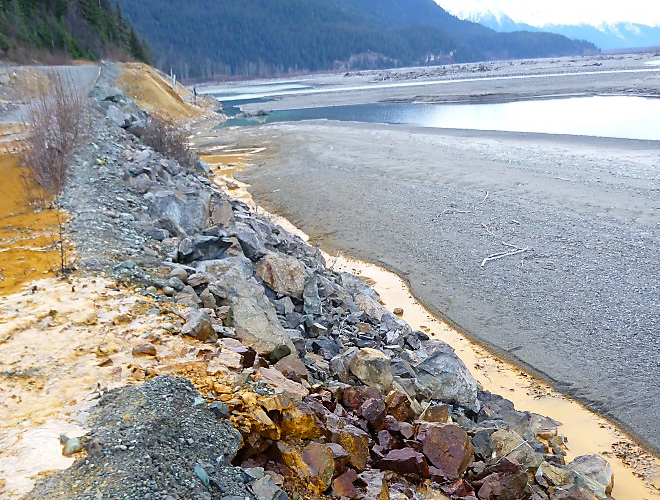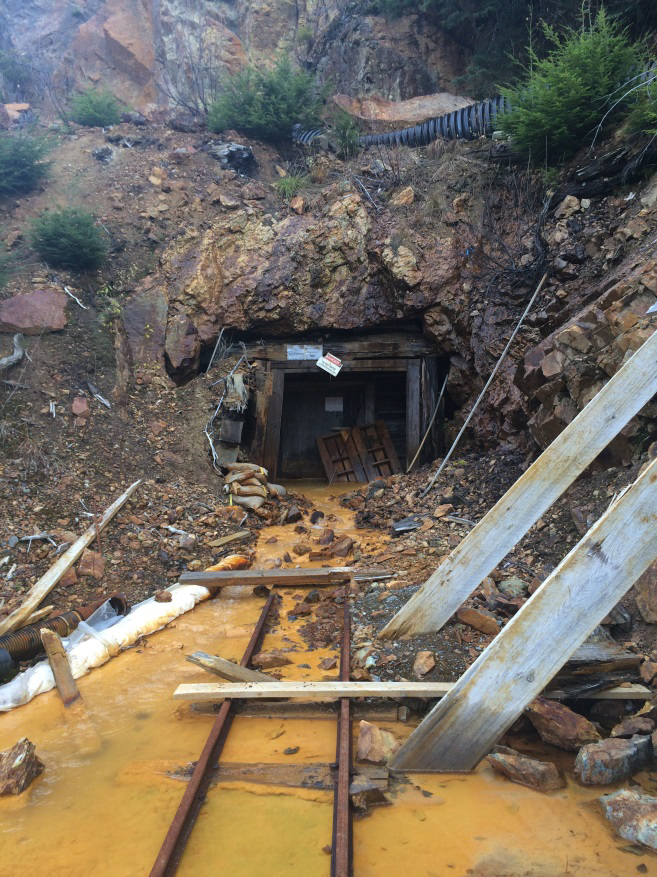
A two-year process that was stalling cleanup efforts at a mine upstream of Southeast Alaska has come to a close. As CoastAlaska’s Angela Denning reports, that could speed up remediation of the Tulsequah Chief Mine.
The Tulsequah Chief mine is in Canada about 20 miles from the Alaska border near Juneau. It extracted zinc, copper and lead in the 1950s. And ever since, rusty, acidic runoff from the mine’s tunnels and leftover waste rock has been flowing into a tributary of the Taku River, a major salmon-producing waterway.
“For 65 years it’s been leaking acid mine drainage pretty much unabated into the watershed,” said Guy Archibald, Executive Director of the Southeast Alaska Indigenous Transboundary Commission. The group represents 15 tribes in the region concerned with toxic waste from Canada’s mines.
The British Columbia government has said it’s committed to cleanup efforts. But in recent years, the process has been held up in court. In 2016, a company that had hoped to get the mine going again, Chieftain Metals, filed for bankruptcy and was put into receivership. That means a third-party firm — West Face Capital — was managing the mine’s assets, hoping to recoup nearly $50 million of investments in the project.
Eventually, a Canadian court gave the investors a two-year deadline to ask for an extension on the receivership. That ended August 11.
Archibald says it’s a big step towards getting the mine cleaned up.
“This is a long time coming and I’m glad to see it,” he said.
West Face Capital did not return a request for comment.

Though BC’s mining ministry released a 113-page remediation plan and says it’s performed some interim reclamation work the last three summers, environmental groups say the end of receivership will allow the BC government to take responsibility for the site and start a more substantial cleanup process.
The government has been criticized for downplaying its environmental impact.
“I think BC sees this as a black mark and they definitely want to get rid of it and prove they can do the job right here,” said Chris Zimmer, with Rivers Without Borders, an environmental watchdog group in Juneau that follows transboundary mining activity. He says BC can now move forward with cleanup.
“The BC government for a couple years has been saying that this bankruptcy has hindered them, has tied their hands, has limited their abilities to actually get in there and physically cleanup up the mine and shut it down,” Zimmer said.
There are still a few steps before that can happen. Chieftain Metals must dissolve. An official with BC’s Mines Division says that’s expected to happen this fall.
Zimmer says there is a long road ahead for remediation.
“It’s going to take a bit of time, certainly, to get the clean up together and deal with the engineering challenges,” he said. “So, we’re hoping to see BC right away firming up its plans, creating budgets, and hopefully becoming a bit more transparent with us here in Alaska so we know what’s going on.”
The BC Ministry of Mines did not respond to requests for comment.
Although Tulsequah Chief Mine is small compared to other transboundary mines in Southeast — and many that are proposed for development — Archibald says all eyes are on it.
“It’s kind of the poster child for bad Canadian mining practices,” he said.
He says it could set a precedent for how the BC government deals with the industry.











